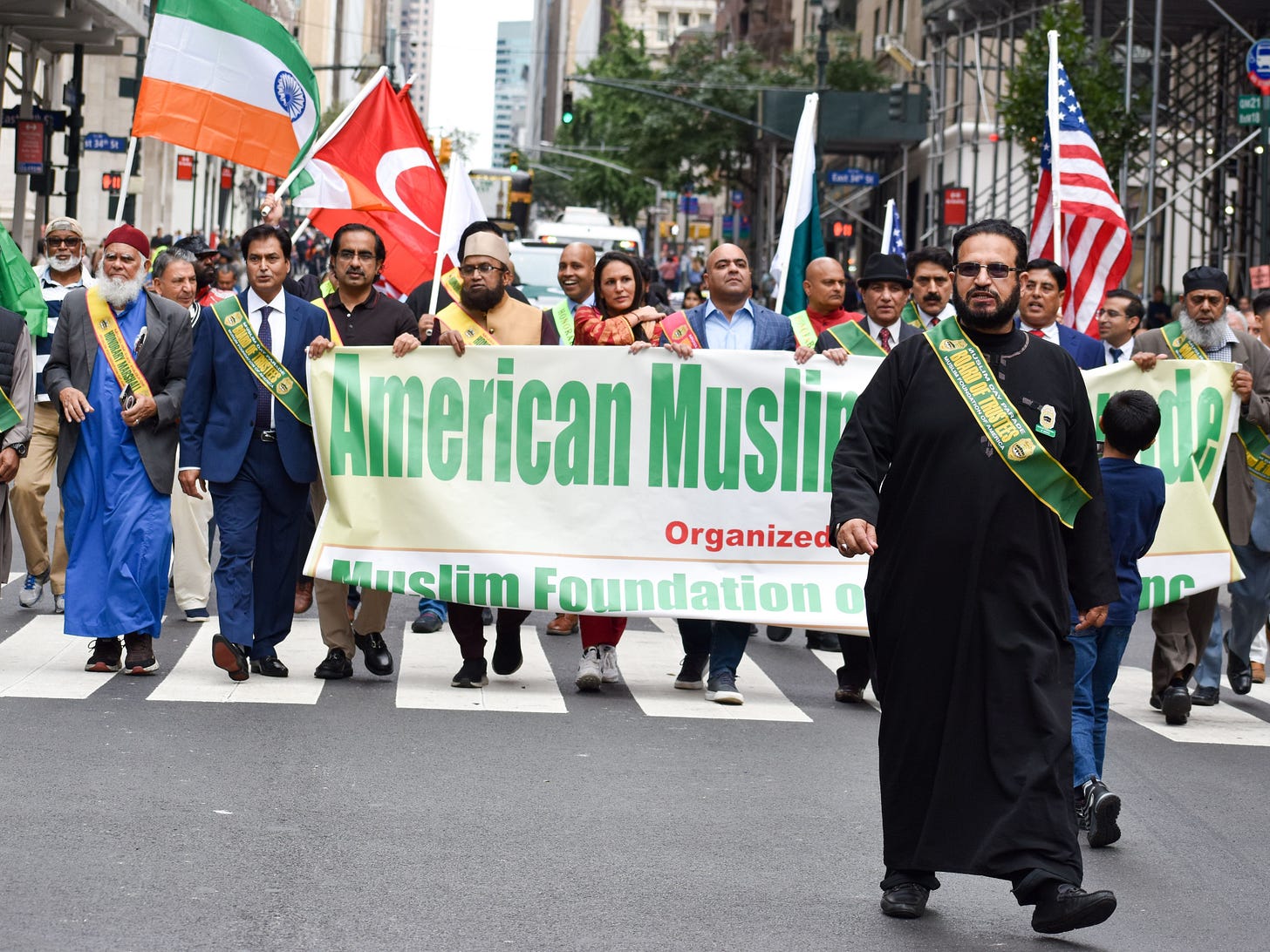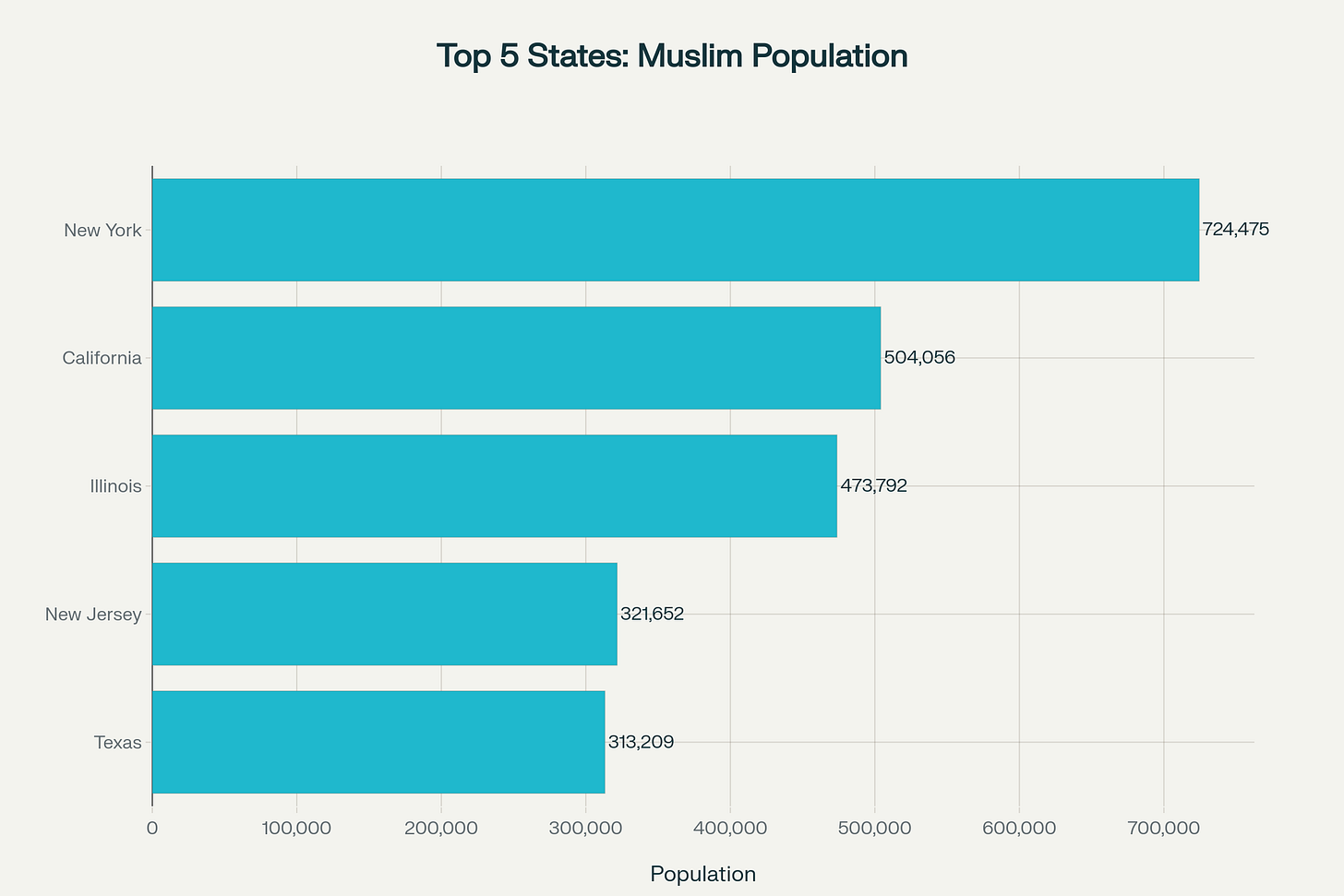The 2020 U.S. Religion Census shows that New York State has the largest Muslim population in America, with 724,475 residents, representing a significant achievement for religious diversity in the United States as their numbers skyrocket across urban areas nationwide. The data emerged at a pivotal time in American politics, when Zohran Mamdani became the first Muslim mayor of New York City on November 4, 2025, demonstrating the growing power and numbers of Muslim Americans in major urban centers.
Coast-to-Coast Growth Concentrated in Urban Centers
The voluntary survey reveals California has 504,056 Muslims, who occupy the second position in numbers, followed by Illinois with 473,792 Muslims, New Jersey with 321,652 Muslims, and Texas with 313,209 Muslims. The five states have 2.24 million Muslims who represent more than half of the estimated 4.5 million Muslim population in the United States. According to the 2020 U.S. Religion Census, Muslims primarily inhabit urban centers in the most populous states of the country.
Coast-to-Coast Growth Concentrated in Urban Centers
Major cities attract immigrants because they offer superior economic opportunities and established pathways for migration, as indicated by the distribution pattern. The census data shows that New York has the most mosques—343 —followed by California with 304 and Texas with 224 Islamic places of worship. The 2020 U.S. Mosque Survey documented 2,796 Islamic worship sites across the country, representing a 31 percent increase from 2010.
Young, Diverse, and Highly Educated Community
The Pew Research Center conducted a 2023-24 Religious Landscape Study, which shows American Muslims form a young and diverse religious group in the United States. The 2025 study shows that Muslims in the 18 to 29 age range make up 35 percent of the total Muslim population, which has a younger average age than the broader population. “American Muslims are younger than all other communities: 26 percent of Muslims are between the ages of 18 and 24, compared with two percent to 12 percent of other groups surveyed,” according to the 2020 United States Religion Census analysis.
The racial and ethnic distribution shows a wide range of population groups. Research from the Public Religion Research Institute shows Muslim Americans are 37 percent Asian American and Pacific Islander, 35 percent white, 25 percent Black, 2 percent Hispanic, and 2 percent multiracial. The community achieves its highest distinction through education, as Muslim adults have achieved 44% college degree completion, whereas the general public has reached only 38%.
Data Challenges and Census Limitations
Experts caution that Muslim population estimates remain incomplete and potentially inaccurate. The 2020 U.S. Religion Census operates as an optional survey that people choose to participate in, but the federal census does not ask about religious beliefs. “The Muslim community is growing rapidly, so these data are already a bit inaccurate five years later,” the census report acknowledges. The undercount results from language differences and fear of persecution, and non-response rates in surveys, which produce a population estimate of 145 Muslims in Hawaii that contradicts most other sources, which suggest thousands of Muslims live there.
Political Representation Reaches Historic Milestones
The community's growing population increases its citizens' political influence. Four Muslims currently serve in the U.S. Congress. At the same time, Mamdani’s mayoral victory represents three historic firsts: America’s first Muslim mayor of a major city, first African-born mayor, and first South Asian mayor of New York City. “That era is over,” Mamdani declared at the Islamic Cultural Center in the Bronx on October 24, according to USA Today. “I will no longer seek my identity in the shadows. I will accept my identity in the light”.
The Associated Press, NBC News, and CNN projected Mamdani’s victory at 9:30 p.m. on November 4 when he secured 50.4 percent of the total votes. The grassroots campaign of His candidate brought in the highest number of Muslim and South Asian voters. Yet his supporters stressed his economic agenda — rent control, free public transit, and universal childcare — rather than his religious background.
Projected Growth and Challenges
Pew Research Center projects the Muslim population in the United States will continue rising, driven by immigration, higher birth rates, and conversion. The community is expected to double by 2050 despite attrition rates among new converts. However, American Muslims continue confronting challenges, including discrimination and stereotyping, particularly for young people who have grown up entirely in the post-9/11 era.




